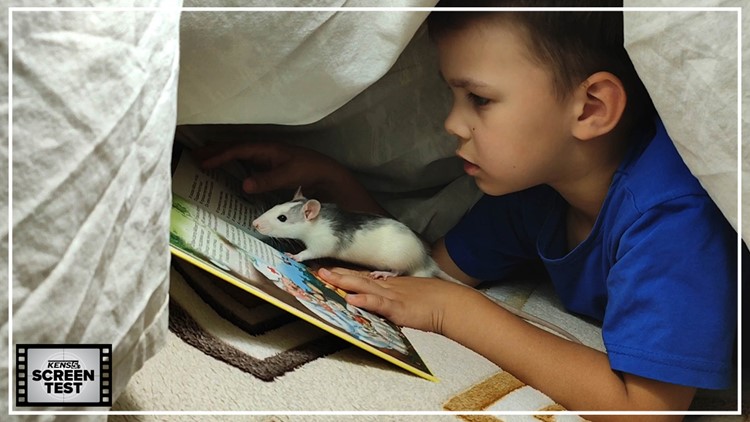Ten years ago, Kevin Macdonald – a Scottish filmmaker best known for “The Last King of Scotland” – requested the world’s participation for a wild experiment: A feature-length film composed entirely of videos submitted by anyone with a cell phone filming any length of time of their life as it unfolded on July 24, 2010. The aim speaks for itself—to capture the vast breadth of global life through the specific lens of one day, constructed from the even more detailed lenses of individual people on that one day. YouTube tagged along on the endeavor, which was probably manifest destiny for the godfather of video-sharing platforms.
Tens of thousands of clips were submitted, naturally, and Macdonald and his team eventually sifted, sifted and sifted through (reportedly) 4,500 hours of footage to create the 95-minute “Life in a Day.” The scale boggles the mind, of course, as do a few sequences in the final product, and the movie largely accomplishes what it sets out to do—even if it’s less a movie and more the wideest-ranging montage of kaleidoscopic contemporary life ever created, and even if it’s a little more interesting to consider what they left out than what they included.
Ten years later, Macdonald (credited as director, although he’s quick to verbally share that credit with the world) has now twice undertaken what I can only assume is a task involving endless hours of frustration and requisite obsession. Certainly no one has Macdonald and his editors beat when it comes to finding a way to pass the time on lockdown, although if “Life in a Day” was an undertaking, the work of stitching together “Life in a Day 2020” – which premiered at this year’s Sundance Film Festival – is decidedly Herculean: 15,000 hours’ worth of footage was collected, from 192 countries, all on July 25. As was the case with its predecessor, the title of “Life in a Day 2020” says it all—even if saying it all in regards to 2020 means something more consequential and ostensibly ambitious.
The sheer variety of submitted videos and perspectives and sights and sounds is, of course, staggering. How could it not be? As with “Life in a Day,” this pseudo-sequel begins in the dark of early dawn, with amusing montages of chirping alarms, yawns, teeth-brushing, showering. Interestingly, “Life in a Day 2020” enlists a new team of credited editors; Joe Walker, the previous effort’s architect and frequent Denis Villeneuve collaborator, was perhaps busy wrangling the CGI sandworms of “Dune.” Still, the first movie’s sensation of rollicking from one person and country to the next is replicated here through the editing efforts of Nse Asuquo, Same Rice-Edwards and Mdhamiri Á Nkemi, which is nothing if not visceral (and perhaps viscerally superfluous).
For a taste, we’re offered a glimpse at the bond between a boy and his rat, Rex. We then see another boy chasing down a goat attempting a daring escape through the farm. A couple films themselves on a road trip; another is filming a break-up. A man shows us massive blocks of ice he stores in his home before melting them into drinking water. We briefly enter the perspectives of a skydiver, a jockey mid-race and an acrobatic drone, and these moments contribute to a thrilling vignette of detachment from the earth; there are other fleet-footed montages of weddings, proposals, “I love yous.” All the while, orchestral music swells and wanes to create a sense of ambiguous profundity, or rather profound ambiguity. And the movie’s favorite subject is a teen chronicling a day-long mission to capture all seven trains slicing through his county. Just ‘cause.
And then, interspersed throughout: Empty streets. Empty ports. Empty sport stadiums. Empty churches. An early vignette consists of cell phone video of a pair of hazmat suits decontaminating the hallway of an apartment building or hotel, or maybe even a cruise ship. People sitting in cars wince as massive swabs are rammed up their noses. A young Indian man continues his ritual of getting the attention of a girl walking by from the rooftop, and small groups of families fly kites from their rooftops while staying six feet apart. Another older man introduces us to the spiders in his home he’s gotten around to naming while staying indoors. And, as you might expect, the most prevalent sight in “Life in a Day 2020” are blue masks.
We don’t, however, and in somewhat of a miracle, spot any Zoom screens. A hearty hat tip to Macdonald for that.


There’s undoubtedly more purpose in this most unusual of sequels, but there’s also more responsibility. For as much as we can imagine the historic pandemic compelled Macdonald to build another mosaic of a million images, that motivation doesn’t afford him the same luxury of thinking this is mere experiment. Whereas “Life in a Day” could easily be “Life in a Day 2009” or “Life in a Day 2011,” there’s no mistaking the historic event that “Life in a Day 2020” will at least partially encompass the first time we see a doctor pull up his mask and pull on a plastic shield helmet early on.
And so, while “Life in a Day 2020” is, like its predecessor, largely impervious to critique, there’s nonetheless a contradiction that’s baked into context and which rears its head during an awkward cut from a young boy hooked up to a ventilator to a celebration of a man’s life on a different continent. How do we look back on a day at the heart of a year defined by devastation? How do you capture the lengths of emotional endurance that someone, somewhere felt in their sighs of relief or tears of grief? And how do you try to reconcile those—should Macdonald even try? But how could he not? What must the lingering sensation be when the credits roll—exhaustion, affirmation, appreciation?
There’s the occasional sign that Macdonald has considered these questions, although arguably not enough. For one thing, “Life in a Day 2020” spends a larger amount time, compared to “Life in a Day,” recognizing death and finality. Images of hospitals and doctors resonate more strongly, as do vignettes of prayer and images from funeral services. In the most heartbreaking anecdote from “Life in a Day,” a father films himself getting his son ready for the day and reminding him they have to “Say hi to mom” before they enter a small room where the image of a woman adorns a makeshift shrine. “Life in a Day 2020” has more than a few manipulative images along that emotional wavelength, including some make me skeptical as to Macdonald’s ethical priorities.
“Life in a Day 2020” chronicles other traumas that unfolded or were otherwise addressed on July 25 –some intensely intimate, some environmental – but the most acute are the killings of Breonna Taylor and George Floyd, whose names we initially hear in audible newscasts before they’re chanted in massive demonstrations. In the most intrinsically political moments, Black American men or women are given the stage to voice their outrage. The movie may be global in spirit, but that specific stretch gives it a distinctly American priority; a particular montage of in-the-streets activism eventually tapers into images of protest from other countries, although these images are brief and what they’re protesting is much vaguer. Where the movie immediately decides to go from there is jarring, to say the least. This may be a spectrum of life in one day, but there are cracks in the facade that go beyond whatever perspective we’re applying while watching.


While some of the sequences can be superficial, others make all the sense in the world. It is, for example, particularly appropriate that we’re witnessing all these moments through a screen following a year when we all worked, socialized and lived through screens. There are also notable and moving displays of overcoming non-COVID-related adversity, like watching one woman slowly picking up a glass of water with a robotic arm.
And it probably says something about our psychology after a year of confronting the coronavirus that the most wondrous of sub-montages in “Life in a Day 2020” showcases various animal species from all over the world gathering in groups; after all, they don’t have to worry about social distancing. As for the images of lone explorers taking that safety measure to full heart by roaming the tops of mountain ranges shrouded in clouds? Well, they certainly had a much more fulfilling June 25, 2020 than I did.
When it comes down to it, it’s the recognition that everything we see in “Life in a Day 2020” – some of which may move us to laughter or tears or anger, because that’s what life does – was captured over a 24-hour period that feels the most like Macdonald’s top priority; creating another virtual time capsule for the social media age. It’s ironic, then, that one of the most wrenching moments is rooted in observations from another period in time. Briefly, we rendezvous with one of the original film’s most amusing personalities, before a tragic reveal. A new day – a new decade – has brought new sadness, and in there I think is an unintentional revelation on this immense project’s part: What happens on one solitary day matters, but it’s what unfolds in the inevitable next day that may end up defining us anyway.
Directed by Kevin Macdonald
2021
MORE SUNDANCE COVERAGE:
- ‘Cusp’ Review (Sundance): Restrained new doc presents a mosaic of thorny teenage Texas life
- ‘Cryptozoo’ Review (Sundance): A psychedelic fantasia of mystical beasts and hand-drawn ingenuity
- ‘One for the Road’ Review (Sundance): Swoon-worthy drama stumbles under the weight of melodrama down the homestretch
- ‘Son of Monarchs’ Review (Sundance): Unhurried immigrant drama attempts to balance the metaphysical with the strictly scientific
- 'The Most Beautiful Boy in the World’ Review (Sundance): Swedish doc paints vivid, haunting portrait of instant stardom
- Trio of films with Texas ties prepare for Sundance debut



